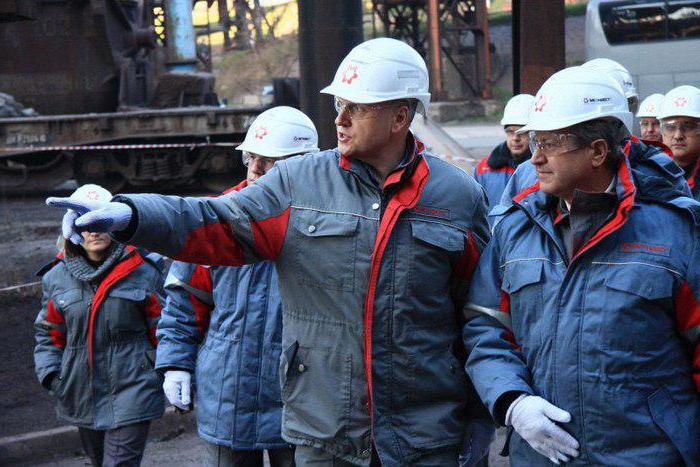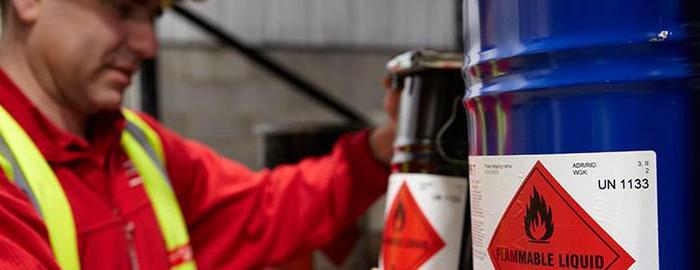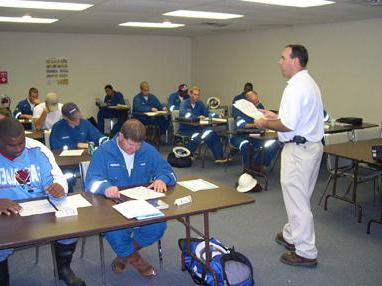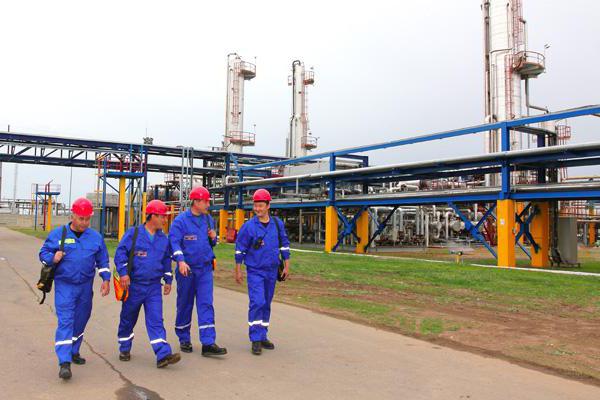Among the existing organizational and economic mechanisms for reducing the risks of technological emergencies, the declaration of safety of industrial facilities is of particular importance. This procedure is fixed at the legislative level in many countries. Let us further consider what the industrial safety declaration of OPO is. 
General information
To ensure accounting for the state of enterprises, a register of industrial safety declarations has been introduced. State regulation is aimed at obliging entities to assess existing threats and inform the competent authorities about them. The composition of the industrial safety declaration includes:
- Information about the enterprise and the processes taking place on it. This is necessary to determine the extent and nature of the use of harmful and dangerous substances.
- A list of measures aimed at ensuring normal conditions for the functioning of the enterprise and control deviations from the usual regime.
- Identification of the type of probable accident, assessment of its occurrence and possible consequences.
- Disaster management instructions.
Normative base
In the Russian Federation, a large-scale organizational and economic program in the field of industrial safety is being implemented. Normally, its implementation is regulated by the relevant Federal Laws. In particular, the foundations of regulation are laid down in the Law on Industrial Safety of Public Utilities and On the Safety of Hydraulic Structures. The specific procedure for assessing the state of the enterprise is established in the Regulation, approved by government decree No. 675 of 1.07.1995. 
The relevance of the issue
Declaration is carried out to regulate safety control at industrial facilities. The competent authorities verify the sufficiency and effectiveness of measures aimed at preventing and eliminating disasters in enterprises. The development of an industrial safety declaration is necessary to reduce threats to the public, employees, and prevent accidents. It is especially relevant for enterprises whose activities are directly related to harmful substances and processes. Examination of the industrial safety declaration contributes to the implementation of an effective system for predicting disasters and trouble-free operation. Of particular importance are events in connection with the transition to new economic conditions, changes in ownership, a decrease in state regulation in a market economy.
Specificity
The declaration acts as an expression of a responsible attitude towards ensuring safety at industrial facilities. It is drawn up by an official document. The list of objects to be declared is established by the Federal Service for Atomic, Technological and Environmental Supervision together with the Ministry of Emergencies. This list includes hydraulic structures, enterprises, drives, storage, in which there is a possibility of accidents. The Federal Law governing industrial safety at hazardous facilities defines the maximum permissible volumes of substances, the presence of which acts as the basis for the preparation of the declaration. Information, the procedure for processing the document are established by a specially authorized executive body. 
Industrial Safety Declaration of Hazardous Production Facilities
The document contains the results:
- A comprehensive and objective assessment of the likelihood of an accident and the threat associated with it for staff and citizens in the surrounding area.
- Analysis of the adequacy of the measures taken to prevent emergencies and ensure the readiness of the enterprise to operate a hazardous facility in accordance with the provisions of the rules and norms, as well as to localize and eliminate the consequences of disasters.
- Measures aimed at reducing the likely negative consequences in an accident.
According to the aforementioned Federal Law, as well as a government decree, regulatory documents have been created that define the requirements in accordance with which a safety declaration of a hazardous industrial facility is provided. These acts also establish the terms for its creation, the rules for registration, a list of information subject to mandatory inclusion. Normative acts define the rules by which the examination of the safety declaration of an industrial facility is carried out. 
Key Points
The safety declaration of an industrial facility should include:
- Information about the enterprise. These include the purpose, technology and production, representing danger, functional tasks, location, boundaries and dimensions, the presence and area of sanitary protection and restricted areas and so on.
- Analysis. It includes an assessment of safety, possible threats, conditions, probable scenarios of accidents and their development.
- Description of the system of sufficient and appropriate measures and actions aimed at ensuring the readiness of the enterprise to prevent disasters, their elimination.
- Issues of hazard warning, protection of citizens and medical support.
- Data on reserve material and financial assets.
- The procedure for informing citizens and local authorities about the alleged and emerging emergency situations at the enterprise.

Using
The industrial safety declaration is drawn up as an appendix to the design documents for the construction, reconstruction, expansion, technical re-equipment, liquidation or conservation of the enterprise. It is also necessary when applying for a license to operate. Clarification of the declaration is carried out when changing the information present in it, or security requirements. A revision of the document to account for adjustments and additions to the regulatory framework and the conditions for ensuring the protection of the enterprise is provided for at least once every five years.
Important point
The industrial safety declaration can be formed independently by the enterprise itself. The document is approved by the head. The formation of the declaration may also be carried out by an organization licensed to carry out safety reviews of industrial facilities. The head of the enterprise is responsible for the completeness and accuracy of the information contained in the document. 
Control instances
The industrial safety declaration after approval, together with the conclusion obtained from the audit, is sent to the relevant ministry, the State Emergencies Ministry, the Federal Service for Atomic, Technical and Environmental Supervision and its regional unit, the Ministry of Emergencies, as well as the municipal authority in whose territory the enterprise is located. Monitoring the timeliness of the direction of documentation is assigned to the above supervisory authority.
Innovations
In accordance with the circumstances that have developed over the past years, the industrial safety declaration has undergone a number of changes. There was a need to reflect new information in the document. They, in particular, relate to the implementation of measures aimed at reducing the level of danger of emergencies at the facilities of emergency situations, prevention of extraneous interference in their functioning.Based on the calculations, requirements were formulated for the volume of available reserves of material and financial resources at enterprises. In addition, requirements were identified to assess the frequency / likelihood of emergencies, their sources, the work of which is associated with the release of hazardous substances that can create damage zones outside the facility with damage to the health / life of the population and the environment. Also, experts performed calculations to analyze the likelihood of poisoning the population with the establishment of the maximum possible number of victims.
Key issues
The industrial safety declaration today should specifically and clearly define the requirements that characterize the enterprise’s readiness to prevent and eliminate emergency situations. There is a special section in the document for this. It should provide answers to questions that characterize:
- The validity of decisions aimed at concentrating significant volumes of toxic and explosive compounds in industrial areas, the location of facilities relative to settlements and other crowded places.
- Measures taken to reduce the main energy indicators of hazardous processes to reduce the number of likely emissions.
- Technical decisions on the possibility of replacing hazardous substances and materials with less hazardous ones.
- Measures taken to reduce the use of explosive and toxic compounds in the enterprise.
- Technical solutions aimed at ensuring the rapid localization of atmospheric emissions of hazardous products and preventing the development of an accident, the release of technological systems from them in emergency situations.
- Willingness of means and forces of liquidation, localization of probable emergency situations, proposed measures for the evacuation of people.

Document Verification
As mentioned above, regulatory acts provide for the examination of the generated declaration. In accordance with the current rules, the approval of the conclusion is prescribed. This procedure is carried out by the Rostekhnadzor apparatus. In this case, the conclusion of the Ministry of Emergencies is taken into account. It is necessary in cases where the ratio of the volume of the hazardous compound at the facility for which the declaration is made to the maximum permissible level of this substance is more than 10. If this indicator is less, the conclusion is given by the civil defense and emergency management body of the subject in whose territory the corresponding company.
Value
The declaration of safety today acts as a mechanism for predicting the socio-economic consequences of emerging emergencies. This process is the most important lever of influence on the stable development of the economic system. The declaration of safety helps ensure objectivity in the justification of budgetary amounts allocated for financing measures to prevent and eliminate disasters. Another objective of the procedure is the transition to a system of acceptable risk, the formation of an effective economic mechanism. It is the normative basis for the financial support of the developed measures for the management of natural and man-made threats.






